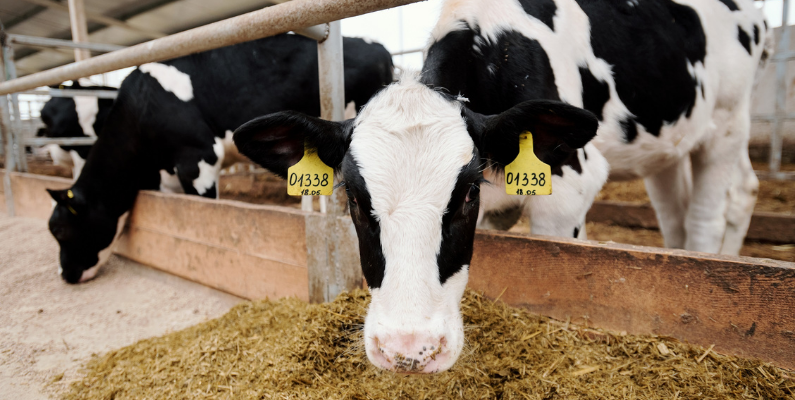Understanding the link between ESG principles and the animal protein supply chain
7 de April de 2022
Tempo de Leitura: 9 minutos
Nowadays, it is necessary to raise our concerns regarding the environment, social responsibility, and corporate governance. In the animal protein market, such concerns are demonstrated by the rise of ESG practices in the entire value chain and its links.
ESG was developed precisely to select, monitor, and value organizations that understand and adopt good practices that go beyond sustainability.
Therefore, in order to meet the principles of the ESG agenda, the animal protein chain understands that it is important to have the right incentives in order to have a society aware of the risks of climate change, adopting new technologies, providing creative lines of funding and, above all, searching for knowledge in several stages.
Thus, it is essential that those responsible for the entire animal protein chain prioritize the importance of the meaning of each ESG letter, in addition to the impacts of this set of meat business-oriented policies that range from the farm to the consumer market.
ESG in the animal protein chain
Basically, the ESG concept is represented by an even balance between environmental, social, and governance aspects in the management of almost all businesses, including the animal protein chain.
The acronym ESG, which stands for Environmental, Social and Corporate Governance, is characterized by a set of policies used to guide companies, investments, and consumption choices focused on sustainability.
We have briefly summarized what these three letters mean, which are the pillars of ESG:
- Environmental – It encompasses everything related to preservation and reduction of negative impacts on the environment by any kind of activity.
- Social – It involves the social relationship between the various players that take part in production processes, from employees, investors, and suppliers to the surrounding communities.
- Governance – It refers to the corporate and administrative governance of a business. It addresses issues related to growth, transparency, feedback about performance of the results and issues related to ethics and compliance.
Therefore, it is established by each pillar, the ESG agenda seeks to select those market players who:
- Seek sustainable development by promoting harmony between production and the environment;
- Develop a relationship with the social environment along with employees and consumers;
- Guarantee the rights of shareholders with compliance and governance rules.
Furthermore, faced with pressure from NGOs, the consumer market, and investors, Brazilian animal protein industries have been increasingly investing in actions that meet environmental, social, and corporate governance sustainability criteria, as will be analyzed below.
Animal protein companies’ actions focusing on ESG
As previously stated, the three pillars of ESG are of major importance in the animal protein market and it is expected more room is made for them in the near future.
Each day, the attitude toward social and environmental aspects has been valued more and more in the corporate market. And it would be no different in the animal protein branch. Large animal protein companies have already understood such importance and invest heavily in ESG procedures.
JBS came out ahead. The world’s largest beef company was the first to announce its commitment to achieving net-zero greenhouse gas emissions by the year 2040. Thus, it intends to make a US$ 1 billion investment over the next nine years.
The animal protein multinational company also aims to veto the purchase of cattle from areas with socio-environmental issues, promote energy savings, and the correct disposal of waste from production processes.
Other giants in the animal protein sector are also investing in ESG measures. BRF, for instance, has already established 93% of its energy from renewable sources. By 2030, the goal is to achieve self-sufficiency, generating energy from solar panels and wind power generation.
BRF also aims to achieve net-zero carbon emissions by 2040, both in their own meat-packing operations and in the production chain.
However, ESG pillars must focus on the entire animal protein chain, from field to retail. Thus, at the beginning of the chain, that is, on producing farms, it is increasingly common to see production systems properly monitored and tracked by buyers.
One of the great challenges of applying full traceability and monitoring of suppliers in the beef and leather production chain is the existence of indirect suppliers. On one hand, some rural properties cover all stages of production (raising, rearing, and fattening), the so-called full-cycle farms. On the other, some farms specialize in only one production stage and sell their cattle to other properties that carry out the subsequent stages. This generates lots of farm-to-farm movement and it involves several links, making the supply chain more complex.
All of Marfrig’s direct suppliers, for instance, have already been properly mapped, and the company wants to expand tracking in the Amazon and the Cerrado by 2025 and 2030, respectively. Together with the Indirect Suppliers Working Group (GTFI), Marfrig makes use of a tool that allows ranchers to inform the origin of the cattle purchased from indirect suppliers.
In their turn, JBS, besides creating a platform for monitoring direct and indirect livestock suppliers, has recently announced that it will speed up its goal of achieving zero illegal deforestation in the Cerrado, Pantanal, Atlantic Rainforest and Caatinga biomes in five years, from 2030 to 2025.
Producers’ responsibilities in terms of meeting the ESG pillars
The major feature of the animal protein market is its network operation, that is, interconnection from the beginning to the end of the chain. Therefore, ESG requirements need to be met at all stages.
Thus, ranchers and other agents who work in the “before mid” stages also have their responsibilities to ensure that the production system is able to meet the requirements regarding ESG.
First, ranchers must understand the importance of the principles that guide good animal welfare practices today, which assure animals are free from:
- hunger and thirst
- discomfort
- pain, illness or injury
- fear and stress
- freedom to express normal behavior
To meet these principles, investment in technologies that improve all aspects of the activity becomes essential.
Among these technologies, it is worth mentioning genetic improvement, Fixed Time Artificial Insemination (FTAI), mineral supplementation, pasture management, employee training on low-stress cattle handling, humane slaughter, and high welfare standards for livestock transportation.
Interestingly, when investing in these technologies, the rancher will naturally also be investing in ESG.
This may sound strange, but the increase in welfare will help in the intensification of production as a whole. Livestock activity will be much more sustainable, animals will reach puberty earlier, feed efficiency will be improved, and the production will be done faster with fewer resources.
It will also improve energy efficiency with water reuse and other operations focused on sustainability.
As required by the market, these same ranchers must invest in Carbon Neutral Beef (CNB) based production processes. They must also promote deforestation control, Greenhouse Gasses emission mitigation, and the control of climate changes that directly impact agricultural production.
Therefore, it is essential to consider what the Forest Code determines regarding the definitions of Legal Reserves (LR) and Permanent Protection Areas (PPA), in order to meet the environmental requirements.
When it comes to governance, which is nothing more than the ability to have more organized and ethical management, management systems are of great value to cattle ranchers, which is why room is being made for them in the market.
How is it possible to know if the entire chain is meeting ESG requirements?
Considering everything we’ve stated so far, it’s clear that ESG requirements are increasingly selecting the best players on the market. However, we need to ask a question for the retail sector, meat-packers and cattle buyers:
How is it possible to know if a player in the production chain is meeting ESG requirements?
The answer is quite complex and relies on very well-founded management, but we have to assume that data is essential!
But how can I get such data?
When it comes to this, Agrotools is a great ally of the retail sector. With a focus on collecting data on agribusiness, Agrotools solutions are the starting point for meat processors and the entire animal protein retail sector to have the best data available.
With highly dedicated and qualified professionals, Agrotools has digital solutions that offer full control and visibility of the entire agribusiness chain in real-time.
Agrotools provides an encompassing understanding of companies’ supply chains, assessing whether or not their suppliers are located in deforestation areas, allowing these companies to ensure deforestation-free policies.
Regarding suppliers in the Legal Reserve area, the Functions (APIs), made available by Agrotools allow the verification of properties in accordance with the Forest Code by referring to the Brazilian Rural Environmental Registry (or CAR – Cadastro Ambiental Rural).
These APIs allow you to:
- Have access to relevant information that guides the analysis of rural credit and insurance;
- Make digital and quick query to the CAR (Rural Environmental Registry);
- Have easy access to information about territories delimited by the CAR;
- Meet the determinations of the Central Bank of Brazil (BACEN), Ministry of Agriculture and Livestock Development (MAPA) and Ministry of the Environment (MMA);
- Meet the guidelines of the Public Prosecutor’s Office (MPF) regarding livestock and agricultural activities, especially in the Amazon.
Still, regarding environmental conservation based on ESG, the APIs offered by Agrotools allow queries of environmental embargoes by IBAMA*, INCRA’s* landbase, conservation units overlapping, among others.
*IBAMA: Brazilian Institute of Environment and Renewable Natural Resources
*INCRA: National Institute for Colonization and Agrarian Reform
Regarding ESG’s social pillar, there are also the Function tools that check other important aspects, such as Labor Analogous to Slavery, Labor Debts, and Indigenous and Quilombolas Lands overlapping with supplier properties.
Furthermore, meat-packers and the retail sector also have their brands’ reputation to protect. Therefore, Agrotools also offers the Brand solution. It makes it possible to guarantee the compliance of animal protein suppliers with the ESG, shielding the brand within the consumer market.
Brand digitalizes the entire animal protein supply chain, from field to retail, with technology and a unique database. Thus, it is possible to protect a company’s biggest asset: its brand.
This solution allows the retail sector to identify compliance with socio-environmental legislation, mitigating risks that may damage the company’s reputation.
It is important to note that you can purchase these Agrotools solutions individually or the entire package, according to your specific needs to optimize your entire experience.
Do you want to bring your company into compliance with the major global regulations associated with ESG and protect your brand’s reputation against scandals and immense losses? Then, you should adopt Agrotools’ solutions and find out if the origin of your raw material is risk-free.
Manage your procurement and sourcing processes in a faster, safer, and 100% digital way
With Agrotools’ technology, you have easy access to detailed data from all your suppliers in the palm of your hand.
Increase your bargaining power and feel the evolution in the results!








